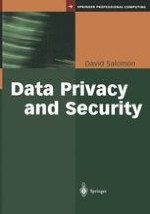2003 | Buch
Über dieses Buch
Covering classical cryptography, modern cryptography, and steganography, this volume details how data can be kept secure and private. Each topic is presented and explained by describing various methods, techniques, and algorithms. Moreover, there are numerous helpful examples to reinforce the reader's understanding and expertise with these techniques and methodologies.
Features & Benefits:
* Incorporates both data encryption and data hiding
* Supplies a wealth of exercises and solutions to help readers readily understand the material
* Presents information in an accessible, nonmathematical style
* Concentrates on specific methodologies that readers can choose from and pursue, for their data-security needs and goals
* Describes new topics, such as the advanced encryption standard (Rijndael), quantum cryptography, and elliptic-curve cryptography.
The book, with its accessible style, is an essential companion for all security practitioners and professionals who need to understand and effectively use both information hiding and encryption to protect digital data and communications. It is also suitable for self-study in the areas of programming, software engineering, and security.
Anzeige
